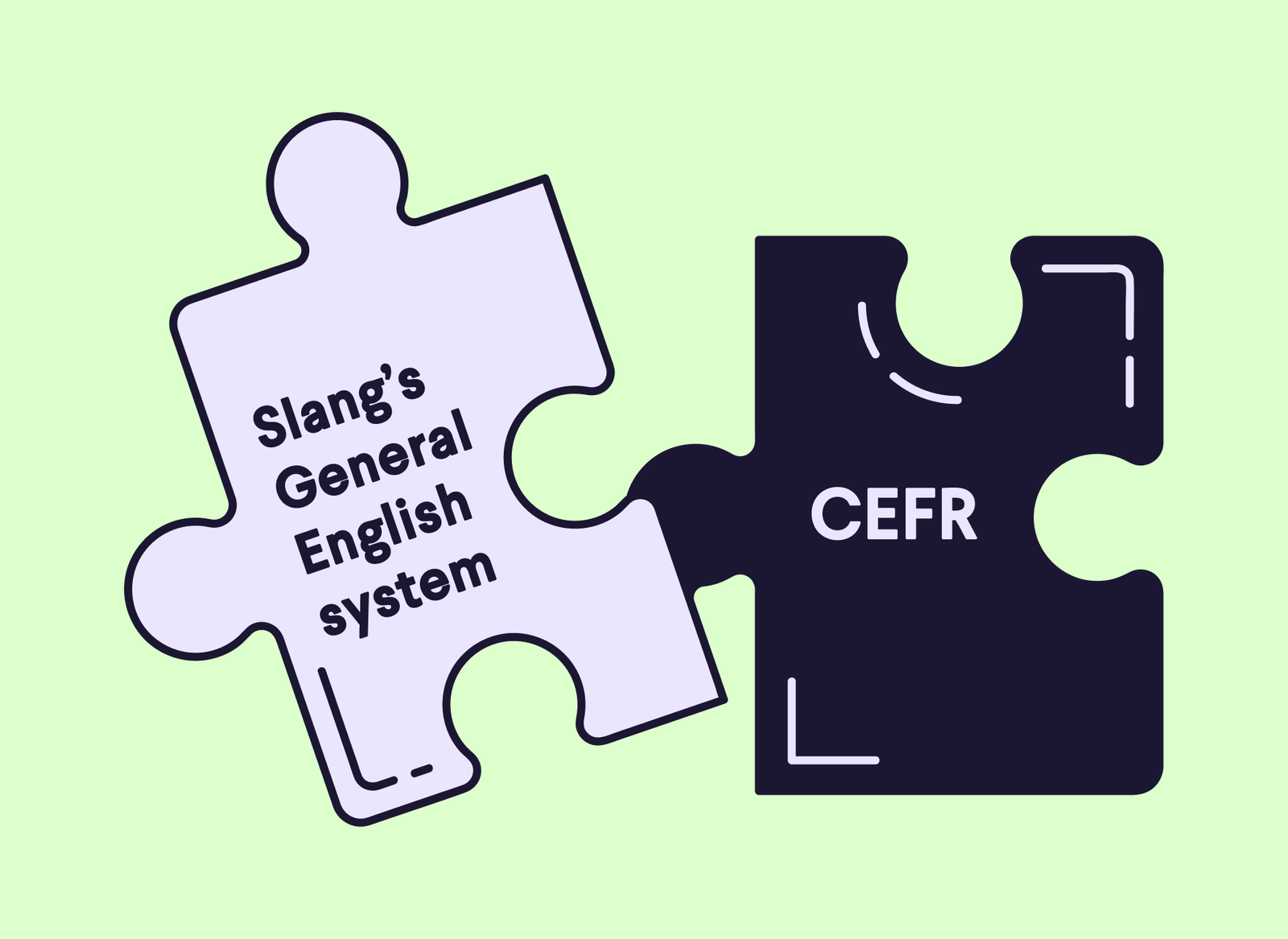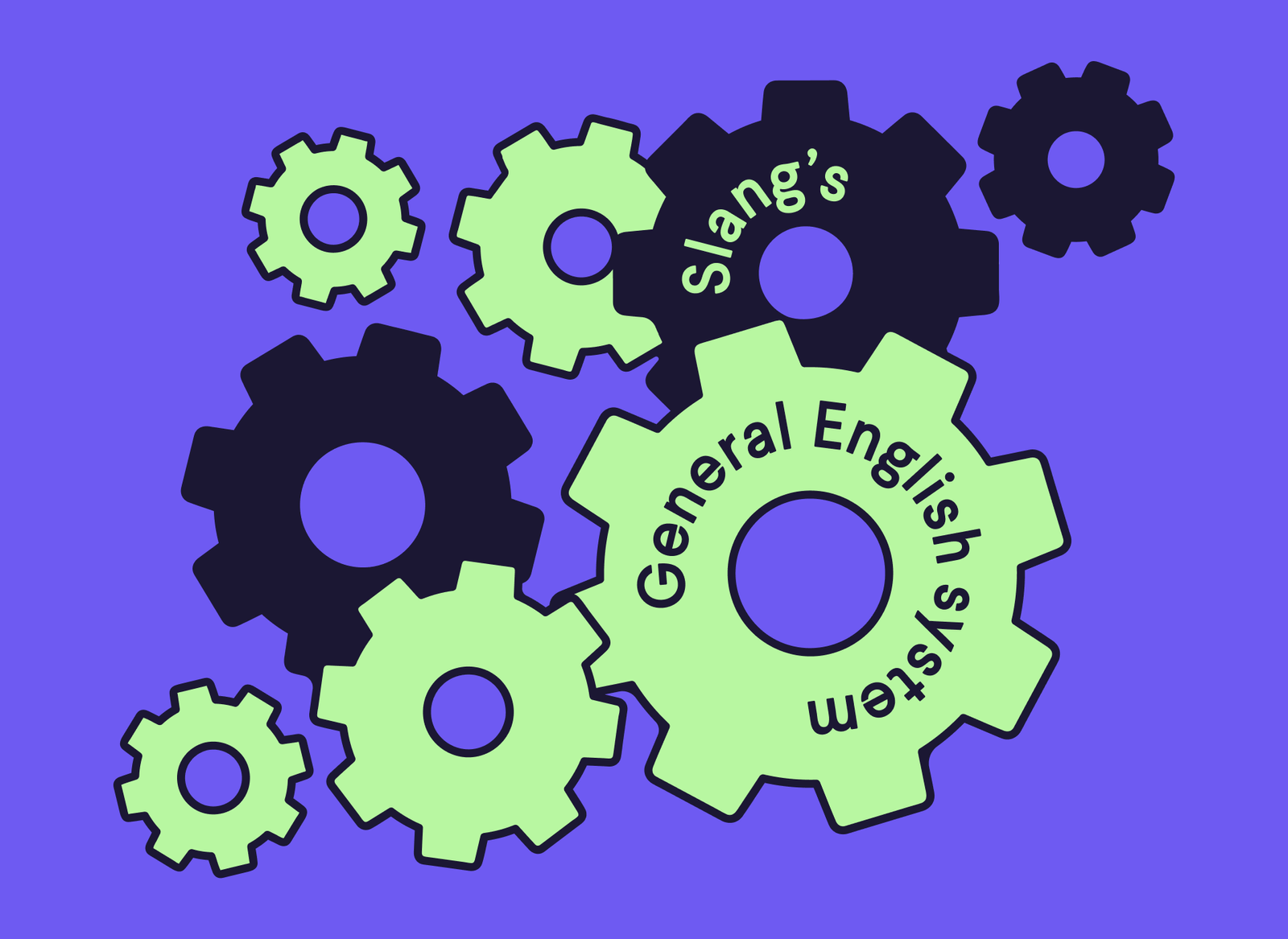Many clients ask us about how Slang’s professional and General English courses align with The Common European Framework of Reference (CEFR). In developing our proprietary methodology, we’ve consulted the research behind the CEFR system and expanded further upon it. We have decided to draw on some concepts that we believe are valuable for measuring communication, and have adapted them for our audience of adult professional learners. The end goal of all this research is helping your organization improve their English in the fastest, most straightforward manner possible!
Strengths and limitations of the CEFR system:
CEFR is the standard language certification system used in the European Union, and has been adopted by many other countries. The CEFR system spans six levels: A1 & A2 (beginner), B1 & B2 (intermediate), and C1 & C2 (advanced). It is based on “can-do statements” which define the real-world situations a user should be able to navigate at each level of linguistic proficiency. At the time it was created, there were many different proficiency systems in use for different foreign languages in different countries. This created problems of standardization. By design, CEFR provides a single flexible framework that can be applied to measure and compare proficiency in any foreign language. On the flip side, it is not designed to specify detailed testing standards for any given language.
This is both the core strength and the core weakness of CEFR. On the one hand, the CEFR framework emphasizes communicative competencies instead of memorizing specific grammar rules or vocabulary items, which aligns well with Slang’s personalized approach to English-learning. On the other hand, because the CEFR system is not specific to English, each curriculum or test designer (including Slang) needs to interpret the can-do statements for themselves. Pedagogical decisions must be made about which specific material to teach in order to help the learner achieve the communicative goals spelled out in CEFR. This sometimes can cause frustration for learners and teachers when they realize that not all “CEFR-based” curricula teach exactly the same topics or content in the same sequence.
Another challenge of implementing the CEFR system in practice is that there are only six officially defined levels. On the positive side, this makes it simpler for curriculum designers and teachers to understand and apply the language proficiency levels. However, especially at the higher levels, it can take even a very dedicated learner a long time to reach the next proficiency level. Imagine this situation: you’ve studied English for a whole year and then you’re told “Well, you’re still B2!”. How frustrating!
We don’t want that for our students! In order to stay motivated, we believe the learners we work with need a more granular way to measure their progress within a single CEFR level.
How Slang builds on CEFR:
Like CEFR, Slang is fundamentally based on a communicative approach. Within each of our General English courses, the learner will study the vocabulary and structures they need to navigate specific situations of daily life (for example: introducing yourself). Similarly, our professional courses are likewise organized around communicating about specific topics. The only difference is that the communicative “can-dos” the user is mastering are related to scenarios encountered in their profession (for example: running a meeting).
In fact, the CEFR framework actually accounts for the fact that learners might need different language skills for different professions. ALTE (Association of Language Testers in Europe), who have published some suggestions for adapting the CEFR guidelines for English, recommend a number of can-do statements that relate to the learner’s field of work or study. For example, one measure of reading proficiency at the B2 level states: “CAN understand most factual product literature within own work area.” Obviously, reaching this goal requires the learner to be familiar with the terminology used in his or her specific work area, which is not the same for every person.
Unfortunately, most other curricula on the market cannot help learners reach this type of personalized English communication goal. This is because the majority of textbooks, language schools, and online solutions that advertise themselves as being aligned with CEFR expect everyone to study one-size-fits-all General English, or perhaps at best some generic “Business English” courses. Slang’s personalized approach, which also incorporates professional English according to the specific needs of one’s field, is the one method that can truly achieve the goals of CEFR. At least for adult learners, professional and specialized English is a necessary part of reaching communicative fluency!
Slang’s General English system also addresses the challenge of motivation caused by the extensive duration of each CEFR level. The beginner to advanced intermediate proficiency range is represented by only 4 CEFR levels, but 10 courses in Slang’s system. Our learners feel a concrete sense of progress much faster as they complete each course. Furthermore, Slang’s system doesn’t merely assign someone to their overall level. We give a much more granular assessment of English ability on a points system. This means that we can measure where a learner falls within each level and how much progress that person has made so far, even if they haven’t completed a full course yet.
We make level conversions easy for you!
If your organization currently uses the CEFR system for course placement or proficiency measurement purposes, you can easily integrate Slang’s General English courses into your existing framework. The following table shows the approximate CEFR level a user will have achieved after completing each course within Slang’s General English system.
| Slang General English Level | Approximate CEFR Level |
| Beginner 1 Beginner 2 | A1 |
| Elementary 1 Elementary 2 | A2 |
| Elementary 3 Intermediate 1 Intermediate 2 | B1 |
| Intermediate 3 Advanced Intermediate 1 Advanced Intermediate 2 | B2 |
| We recommend that advanced users take our professional courses. | C1+ |
Our catalogue of over 120 different courses includes not only General English but also a huge range of technical and specialized English courses. No matter what profession or industry you’re in, Slang offers exactly the English your employees need on a daily basis for their careers. Check our website and get to know all of our courses!





